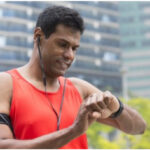Last week, a young patient asked whether it was worth purchasing the latest Apple Watch as a way to avoid hospital waits and traffic. While smartwatches with ECG capabilities are impressive technological advancements, they cannot replace consultations with doctors.
Data by itself is of little use unless interpreted correctly. For example, if a smartwatch indicates a high heart rate, which could be a sign of atrial fibrillation, the next steps are unclear. Should the patient experience anxiety or share their findings with a cardiologist? Or should they undergo unnecessary treatment?
IoT is the future of healthcare, and AI and data analytics have opened the doors to a new world where healthcare can be more accessible and affordable. This is especially important in India, where there is a ratio of only 0.7 doctors and 1.5 nurses per 1,000 people, and the number of specialists is insufficient. Studies show that India needs about 88,000 cardiologists, but only has around 4,000.
Cardiovascular diseases are one of India’s most significant killers, with deaths due to these diseases increasing from 1.3 million in 1990 to 2.8 million in 2016. As risk factors for heart disease, such as high blood pressure, high cholesterol, high blood sugar, and obesity, continue to increase, there is a change in the patient profile.
Healthcare providers must integrate technology into clinical processes. To make health data actionable, certain processes must be in place. Technology can aid in diagnosis and remote monitoring, but it does not replace the need for a doctor.
(The author is consultant cardiologist and head of department – cardiology, Sagar Hospitals)



